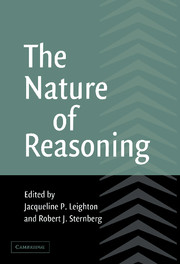Book contents
10 - Cognitive Heuristics
Reasoning the Fast and Frugal Way
Published online by Cambridge University Press: 05 July 2011
Summary
It is commonly assumed that more information can lead to more precision and better decisions. Consider for instance, the task of catching a baseball. In order to catch the ball, the ballplayer must be at the appropriate spot on the field, where the incoming ball lands. How could this spot be determined? One way to arrive at a precise prediction of the landing point would be to find the ball's launch angle and initial velocity. However, this would lead to an incorrect prediction unless other considerations, such as wind speed, humidity, and the spin of the ball were taken into account. Additional considerations such as differences in wind speed at different parts of the ball's flight could be used to further refine the estimate. Of course, any of these considerations might not be easily or perfectly knowable, and there is a chance that an important consideration would be overlooked. Given that there are typically only a few seconds to gather information and take action, it is likely that by the time that all necessary calculations have been made, the ball would have already landed.
What is the player to do? One way to solve the problem effectively is to forget all the calculations and use the gaze heuristic. Following this heuristic, the player fixates visually on the ball and starts running in the general direction where the ball is likely to land, adjusting running speed so that the angle of gaze to the ball remains constant (see McLeod & Dienes, 1996).
- Type
- Chapter
- Information
- The Nature of Reasoning , pp. 273 - 288Publisher: Cambridge University PressPrint publication year: 2003
- 4
- Cited by



